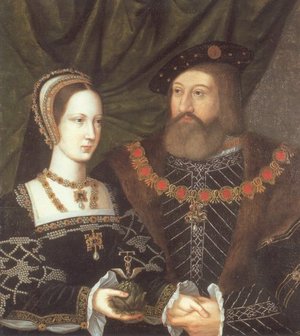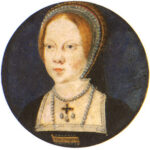Anyone tuning in to the Showtime series “The Tudors” to see an accurate depiction of historical fact will be sadly disappointed but entertained, none the less. The script writer has taken extreme liberty with historical fact and applied artist license to tell a story about a period in the life of the King of England, Henry VIII. The result is a compelling story with decidedly mature content well suited for a contemporary audience, even though accuracy is lacking.
The series stars Jonathan Rhys Meyers as King Henry VIII, depicting a time during his adult life. The actor is physically unlike the king most viewers would expect to see. Rather than an obese and bitter figure previously presented in film, this Henry is youthful, athletic and eloquent. His portrayal of King Henry is definitely for an adult audience. His sexual indulgences leave little to the imagination of the viewers. While the character and his story are based in fact, “The Tudors” fails to follow the details of history or the royal genealogy.
The Tudor family tree gets a remodel with the Showtime program. Henry’s siblings are reduced to one sister rather than two. The sisters are presented as a composite character, Margaret, played by Gabrielle Anwar. In “The Tudors” version, Margaret is sent to marry the elderly ruler of Portugal, who is murdered by her. She subsequently secretly weds Charles Brandon, a member of Henry’s circle of friends. While this is an intriguing love story, it deviates from historical accuracy.
In reality, Henry had three siblings. His older brother, Arthur, died shortly after his marriage to Catherine of Aragone. Henry wed Catherine after his brother’s death to maintain the agreement Henry VII, young Henry’s father, had with Spain. Henry also had two sisters, Margaret and Mary. The truth of Margaret’s nuptials is a far from the storyline of “The Tudors”.
In fact, Margaret married first, King James IV of Scotland. That marriage produced a son, James V of Scotland. Margaret was next web to Archibald Douglas, who she later divorced. Her last marriage to Matthew Stuart produced two sons, Charles and Henry Stuart. Henry Stuart, Lord Damley, was wed to his half-niece, James V’s daughter, Mary Queen of Scots.
The other sister of Henry VIII was Mary Tudor. She actually was betrothed to Catherine of Aragon’s nephew, Charles, but was married to Louis XII King of France instead. Louis XII was thirty-four years older than Mary. Mary was undoubtedly, not pleased with the arranged nuptials to a feeble, old man, but was to have no control over her destiny in such matters. She solicited an agreement with Henry that she would wed a spouse of her won choosing if she became a widow to King Louis. When the French king died three months into the marriage, Henry had no intention of keeping his promises to Mary.
Mary circumvented another arranged marriage when Louis XII died. She wed Charles Brandon, Duke of Suffolk, without King Henry’s blessing. This clandestine marriage angered King Henry, but his ire was short lived. Mary was a favorite of Henry and Charles his best friend; he excused the couple for the transgression.
The Showtime series makes no reference to Mary. The real lives of Mary and Margaret are commingled to create the character presented as Margaret. To the script author, this deviation is inconsequential, but genealogist and historian are aghast. Other events and places receive a similar treatment of artist license.
Unfortunately, Showtime does not offer a disclaimer indicating the story is fiction based on fact. Many may not be able to overcome the rewriting of history presented by “The Tudors”. For those able to look passed the transgression to the facts, “The Tudors” does provide good entertainment. “The Tudors” is scheduled Sunday night 10PM ET or check local schedules for the numerous rebroadcasts show during the week.






